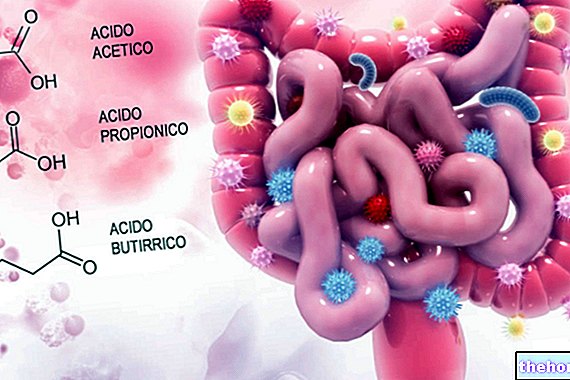Biological functions
Vanadium is a chemical element (symbol V) present in the human body in particularly modest quantities; For this reason it falls into the category of trace elements, more precisely in that of trace or even ultra trace elements.

The biological role of vanadium has not yet been fully clarified; in particular, it is not yet certain whether it is an essential element for the human organism or not. This despite the fact that its intervention in some reactions of the organism, such as those of phosphorylation of some receptor proteins, has been ascertained. The biological activity occurs in the form of vanadate ion (VO3−), which tends to form complexes with hydrogen peroxide to form peroxivanadium (pervanadate), biologically more active in the inhibitory activity against phosphotyrosine-phosphatase proteins (PTPs) .
Foods with Vanadium
The daily intake of vanadium with the diet is around 10-20 micrograms (10-20 millionths of a gram).
The main food sources are represented by whole grains and seafood. Beer, dried fruit and certain mushrooms are also particularly rich in vanadium.
Among vegetables, the lowest levels are found in fruit and vegetables, with values around 1 microgram / kg. Higher levels are found in cereals, especially flour and bread, vanadium concentrations can exceed 10 micrograms / kg.
Arguably due to the higher grain diet, chicken meats have higher concentrations than beef and pork. The vanadium content in fish is also good, while eggs and milk have modest contents.
Needs and Shortages
The need for vanadium has not yet been established, but a "daily intake of 10-30 micrograms is considered adequate."
Even the lack of vanadium for humans has not been ascertained, in the sense that it is not clear whether there is any negative effect (deficiency syndrome) attributable to an "insufficient intake of this element.
Vanadium and Diabetes
Vanadium has been known for several years to interfere with glucose metabolism, producing potentially beneficial effects for diabetic patients.
In this context, vanadium could prove to be a therapeutic aid, thanks to the stimulation activity on the insulin sensitivity of tissues exposed to low levels of the hormone (as happens in diabetics), and to the inhibition of glucose synthesis in the liver.
Improving glycemic control in diabetic patients would also have positive effects on reducing LDL bad cholesterol levels.
The amount of studies supporting the antidiabetic activity of vanadium is numerically discrete, but mostly confined to small population samples and lacking in control with placebo groups.
Dosage and method of use
Most studies on the antidiabetic properties of vanadium have been conducted using an oral dose of 100 mg as a supplement, once daily in subjects with impaired glucose tolerance. It is uncertain whether this is the optimal dose, but it still appears to be effective.
In U.S.A. the Food and Nutrition Board has established an E.S.A.D.D.I. (Estimate Safe and Adequate Daily Dietary Intake) for Vanadium of 100 micrograms / day
Toxicity
The health risks associated with exposure to vanadium depend primarily on its oxidation state; for example, pentavalent vanadium (V + 5) is very toxic (remember that as its valence increases, the toxicity of the element increases).
The upper limit of toxicological safety in human exposure is in the order of 200 micrograms / day; it means that below these levels, exposure is generally recognized as safe (without toxic effects, even for the most sensitive sections of the population).
In the adult, the food and nutrition board indicates a Tolerable Upper Intake Level 1800 micrograms / day, specifying that "although dietary vanadium has shown no adverse effects on humans, there is no justification for adding vanadium to food and vanadium dietary supplements should be used with caution; this value (UL of 1800mcg / day) is based on adverse effects recorded in laboratory animals and can be used to set a UL for adults, but not for children and adolescents'.
Chronic exposure to high levels of vanadium causes adverse effects especially on reproduction and development, both in males and females. Negative effects also occur in the liver and neurons.
It should be noted that, in addition to the dietary intake, the exposure of vanadium in the human body also significantly depends on atmospheric pollution, since the respiratory system absorbs it easily.
Vanadium is released in large quantities into the air environment with the combustion of crude oil and other hydrocarbons. Persons exposed for occupational reasons to the inhalation of the metal may present symptoms of lung distress (irritation, cough, bronchospasm) and signs of neurotoxicity.




























